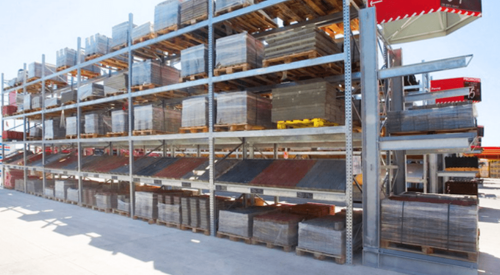| Fletcher Groves is vice president of SAI Consulting in Ponte Vedra Beach, Fla., and the lead consultant for the professional staff working in the real estate and construction industries. Groves has spent more than a quarter of a century working in the home building, real estate development, management consulting and commercial banking industries. He held senior management positions at Arthur Rutenberg Homes and also started and managed his own residential building company.
|
When building companies participating in our most recent Reference Point study state that the length of their contract-to-closing process increased significantly in the past two years, does it really matter? It matters a lot. The 27-day increase in the average number of days it takes a builder to build a home -- from 141 days in 1997 to 168 days in 1999 -- equates to a 20% increase in cycle time. This increase, in turn, results in a 15% decline in a builder’s productivity.
With this productivity decline, evidenced by cycle time increases, some combination of two phenomena will almost certainly occur:
1) Sales will stay the same, but backlog will increase and revenue will drop (as fewer homes are completed with the same investment in fixed expenses).
2) Revenue will hold steady, but working capital, work-in-process and operating expenses will increase significantly -- each with a bruising effect on net operating income.
| Average number of days builders say it takes to build a home from contract to closing
|
These effects can be temporarily masked -- by timing, accounting techniques and unsustainable spurts of period-ending "production7quot -- but the effects will simply multiply.
Performance Measures
Let’s look at the relationship between cycle time and the three performance measures that affect productivity: throughput (revenue), inventory (work-in-process) and operating expense. The goal is to increase throughput while reducing inventory and operating expense. As the table below shows, however, the desired result isn’t the easiest to achieve.
| When Throughput... | and Inventory and Operating Expense ... | Cycle Times will ... |
| ... goes down | ... also go down | ... tend to stay the same |
| ... goes down | ... stay the same | ... get longer |
| ... goes down | ... go up | ... get much longer |
| ... goes up | ... also go up | ... tend to stay the same |
| ... stays the same | ... go up | ... get longer |
| ... stays the same | ... also stay the same | ... tend to stay the same |
| ... stays the same | ... go down | ... tend to get shorter |
| ... goes up | ... stay the same | ... get shorter |
| ... goes up | ... go down | ... get much shorter |
In terms of making the productivity measures move the right way, a "less-for-less", "same-for-less" or "more-for-more" approach might not do any damage, but the only strategies that really make sense are "more-for-same" and "more-for-less." It is not a coincidence that the strategies that have the most positive effect on productivity measures also produce the fastest cycle times.
This point needs to be made perfectly clear. There is no way that a decline in productivity (as evidenced by an increase in cycle time) can ever have a positive impact on a builder’s operating or financial performance -- and no extenuating circumstances or events offset that reality.
Calculating Cycle Time
Why do builders need to calculate the actual cycle times of their processes instead of simply guessing at them? First, as Reference Point data demonstrates, most builders have no idea how long it really takes them to sell, design, estimate, build and close title on their product. Second, to be an effective measurement of productivity, cycle time needs to be determined on a consistent, periodic basis. Third, cycle time is not only an effective measure of productivity, it is also a lead indicator -- both a driver and a predictor -- of future operating and financial performance. For all of these reasons, cycle times need to be calculated, not estimated.
| Percentage of builders rating these common improvement projects a "high priority."
|
There are two techniques for measuring the cycle time of a builder’s contract-to-closing process. Both methods are accurate, but they are useful in different ways, and one is more difficult to calculate than the other.
The first method is to track some or all of the jobs as they move through the process. In a manufacturing company, this would be done with a lot traveler, a tag that accompanies an order or product through the process. In a building company, the tag would accompany the documentation (contract, plans, etc.) as it passes through the contract-to-closing process. The average duration is used as the cycle time for whatever calendar period is being measured.
| CTS | STC | CTC | |
| Calculated Cycle Time | 56 | 153 | 15 |
| Builder Estimates of Cycle Time | 41 | 119 | 8 |
| Difference between builders’ estimates of number of days in contract-to-start, start-to-completion and completion-to-closing and calculations of cycle time based on the amount of inventory and throughput in their systems. | |||
The second method -- and the easiest one to use -- is a formula-based calculation. It uses measures of process throughput (the number of production units -- the jobs -- that pass through the process in a given period) and units in process (the number of jobs in the process at any point during the period) to determine the cycle time of the process. Regardless of the process (contract-to-start, start-to-completion or completion-to-closing) or the time period being measured (month, quarter or year), the formula is always the same:
(Average Units in Production ÷ Units Completed) x Number of Days in the Period
(Units in Production ÷ Units Completed) x Number of Days (80 ÷ 42) x 30 = 57 days
| 1999 | 1997 | |
| Closing and title process | 17% | 7% |
| Financing process | 24% | 17% |
| Construction documents and building agreements | 28% | 21% |
| Estimating/budgeting process | 31% | 16% |
| Plan design, drawings and specifications | 32% | 35% |
| Permitting process | 39% | 30% |
| Contract approval (sales) and change order process | 45% | 35% |
| Suppiler and trade contractor partnering | 52% | 39% |
| Quality-assurance process | 55% | 26% |
| Project scheduling and coordination | 70% | 56% |
| Percentage of builders rating improvement opportunity "high priority" 1997 and 1999 | ||
Usually, the number of units in production is based on an average of the number of units in production at the beginning and end of the period. For example, if a builder started June with 75 (signed but not started) contracts and ended the month with 85 contracts, the average number of units in process for June would have been 80 contracts. If the builder started 42 homes in June (thus completing the contract-to-start process), the cycle time of the contract-to-start process would be:
An additional advantage to using a formula-based cycle time calculation is the capability to solve for any of the unknown variables in the equation. While the most common use will undoubtedly be for determining cycle time length, the formula can also be used to develop valuable insight into issues such as process capacity, start requirements and the effects of even-flow production.












